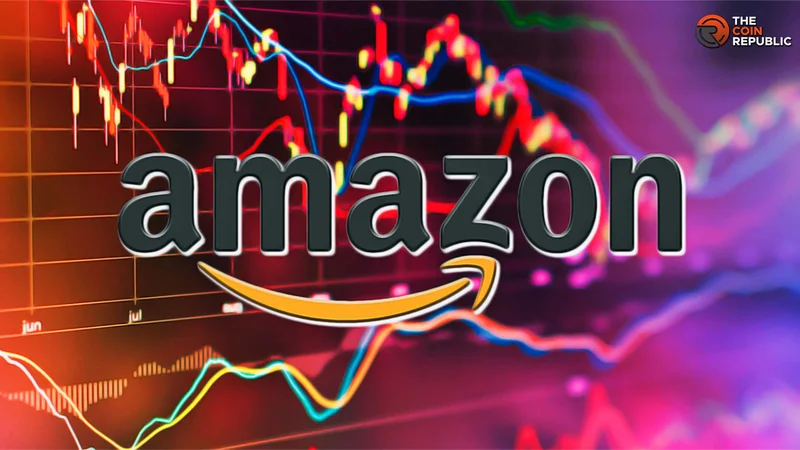Wall Street Is Panicking About Amazon's Cash Flow. Here's Why They're Missing the Real Story.
There’s a number floating around Wall Street right now that has some people spooked. It’s a big, flashy figure tied to Amazon, and on the surface, it looks like a warning sign. Analysts are forecasting a significant drop in the company’s free cash flow this year, from a staggering $38 billion all the way down to a “mere” $23 billion. In the cold, hard world of finance, a dip like that is usually cause for alarm.
But I’m here to tell you they’re looking at it all wrong. They’re treating it like a crack in the foundation when, in reality, it’s the sound of a new one being poured. That number doesn’t represent a company in retreat; it represents a company in the middle of one of the most audacious transformations I’ve ever seen. It’s the cost of building the future, and if you understand what’s truly happening behind the scenes, it’s not a scary number at all. It’s the most exciting number in tech today.
To understand why, we have to talk about that metric itself: free cash flow. In simpler terms, it’s the cash a company has left over after paying for everything it needs to run and grow its business. It’s the lifeblood, the ultimate measure of a company’s ability to innovate, invest, and dominate. And for the past two years, Amazon’s FCF has been on a tear, roaring back from losses to tens of billions in the black.
So why the sudden, projected drop? The answer is one of the biggest, most expensive, and most ambitious bets a company can make: artificial intelligence. Amazon is spending an astronomical amount of capital on AI infrastructure—the servers, the chips, the data centers, the raw computational power needed to build a truly intelligent digital world—and the sheer scale of this is just staggering, it’s the kind of all-in move that redefines an entire industry and it means the gap between the commerce of today and the commerce of tomorrow is closing faster than we can even comprehend. This isn’t just an investment. It’s a declaration.
From Keywords to Conversations
For years, we’ve all been trained to speak a strange, robotic language to find what we want online. We’d go to Amazon and type in stilted phrases like “men’s running shoes size 10 blue lightweight.” We were stuffing keywords into a search bar, trying to satisfy an algorithm. Sellers, in turn, built their entire businesses around this game, cramming their product listings with every conceivable keyword to get noticed. It was a transaction, not a conversation.
That entire paradigm is being dismantled.
What Amazon is building with all that cash is an engine for a new kind of e-commerce, one built on natural, human language. You’ve probably heard of their AI chatbot, Rufus. But Rufus isn't just a feature; it’s a sign of a fundamental shift. Sellers are already changing their tactics, moving away from keyword-stuffing and toward writing product descriptions that sound like a real person talking. They’re focusing on real-life use cases, better images, and conversational tones, because that’s what the new AI understands.

When I first saw the data showing that sellers who adopt this new, AI-friendly approach are seeing sales boosts of 15% to 20%, I honestly just sat back in my chair, speechless. That’s not an incremental improvement. That’s a validation of a whole new model. It proves that when we build systems that understand us, instead of forcing us to understand them, everyone wins. The customer gets a better, more intuitive experience, and the seller who provides genuine value gets rewarded. This is a key part of How Amazon’s (AMZN) AI Tools Are Changing the Way Sellers List Their Products.
This transition is as profound as the shift from the printed mail-order catalog to the first searchable e-commerce websites. We are moving from a world of searching for data to a world of having a dialogue with it. Can you imagine asking your shopping app, “I’m going on a hiking trip in the Rockies next month, what kind of boots won’t give me blisters?” and getting a genuinely intelligent, curated answer? That’s where we’re headed. And it requires a completely new digital architecture. That’s what the dip in free cash flow is paying for.
Of course, with this power comes immense responsibility. As commerce becomes more conversational and AI becomes a trusted advisor, how do we ensure that trust isn’t exploited? The line between helpful suggestion and subtle manipulation could become blurry, and it’s a challenge we’ll have to navigate with care and transparency.
The New Operating System for Commerce
The mistake people are making is viewing Amazon through the lens of a traditional retailer. They see a dip in a financial metric and assume the business of selling things is getting weaker. But Amazon isn't just in the business of selling things anymore. It’s in the business of building the very operating system on which the next generation of global commerce will run.
Think of that $23.5 billion in free cash flow not as a profit-and-loss figure, but as a research and development budget for the future of the entire market. They are laying down the digital railroads, the intelligent highways that will connect buyers and sellers in a way that feels less like a database and more like a discovery. They are building a system that doesn’t just list products, but understands them.
So when you see that number, don’t panic. Don’t see it as a sign of trouble. See it for what it is: the down payment on a more human, more intuitive, and vastly more intelligent marketplace. What questions will you be able to ask it next?









